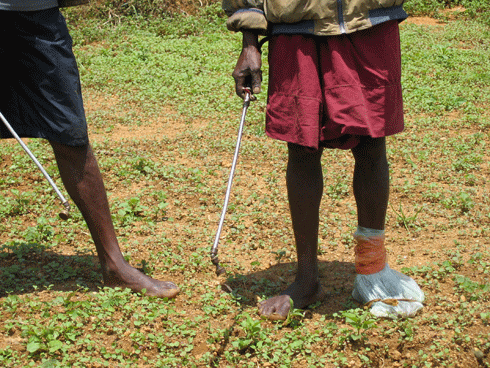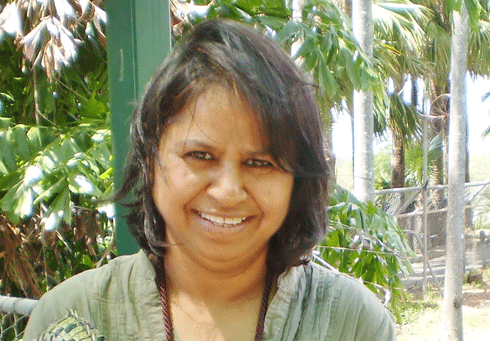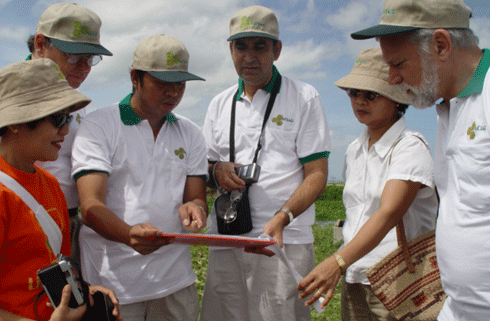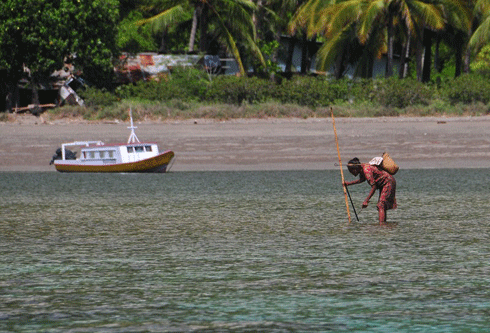
|
Published: 4 February 2013
A best-seller's enduring scientific legacy
In 2012, the world celebrated the 50th anniversary of the revolutionary book, Silent Spring, written by marine biologist and environmental advocate, Rachel Carson. Today this bestseller is still regarded as the foundation of the environmental advocacy movement.
Calling on a range of scientific evidence, the book documented the dangers of pesticides and herbicides, showing that the use of toxic chemicals in agriculture has detrimental consequences for wildlife and for human health. Despite an assault on her reputation from the chemical industry, Carson prevailed. The book spurred revolutionary changes in the laws affecting our air, land and water.
With her unwavering passion for truth and concern about human and environmental health, Carson became a pioneering environmental advocate. Studies on the toxicity of pesticides to both aquatic and terrestrial non-target organisms are now routinely undertaken to ascertain safety risks. As a result, we are now using novel pesticides with greater efficacy and reduced impacts.
Dr Rai Kookana is currently a Chief Research Scientist with CSIRO Land & Water’s Adelaide laboratories. His team has been investigating the impact of a range of organic contaminants – including pesticides and endocrine disrupting chemicals – on aquatic and terrestrial environments.
How did you get into this area of research?
When I first came to Australia from India in 1985 to do a PhD degree, I had to choose a topic for my research. I had short listed two: the dispersal of heavy metals due to mining activities in the environment, and the environmental fate of pesticides.
My initial inclination was to focus on heavy metals, as a lot of work was happening in this area, in Australia and overseas. Moreover, mining being a major industry in Australia, it seemed like a relevant topic.
The literature on pesticides, on the other hand, was relatively sparse, particularly for Australia. I had not heard of Rachel Carson. Then I came across Silent Spring and started reading it. I ended up choosing pesticides in the environment as my research topic.
Why did the book have such an impact for you?
I think Silent Spring resonated with me because I grew up in a farming family in northern India, which is known for its intensive agriculture. I had seen how pesticides, especially organochlorines, were then so widely used. The book reminded me of how DDT and other organochlorine pesticides (OCs) had become part of the daily lives of my family.
At our farm, OCs were used as a panacea for almost everything, including head lice! Without any concerns about exposure and toxicological effect, we would sprinkle DDT around for various uses, without any form of personal protection.
To control malaria, the local department of public health would regularly come and spray every nook and corner of the houses in our village with DDT. A cloud of spray would drift everywhere – on animal feed, on grains – and cover everything and everyone in range. Store rooms with animal feed were targeted as they were a good spot for mozzies. It’s highly likely this contaminated feed would have left a residue in the cows’ milk, which my vegetarian family relied on so heavily for protein.
When did you start your research on pesticides at CSIRO?
After I decided on my PhD research topic, I found that my University did not have the necessary facilities for the research. An arrangement was made to collaborate with a local CSIRO laboratory and access their facilities. I eventually joined CSIRO in 1992, where I was able to establish new research on pesticides. In 2002, I initiated work on endocrine disrupting chemicals, a group of chemicals that Rachel Carson had highlighted in Silent Spring. This work continues at CSIRO, albeit with limited funding, with colleagues such as Dr Anu Kumar. The team has an active program on understanding the environmental fate and risks of EDCs including pharmaceuticals and personal care products.

|
|
In many poor countries, pest and weed control often involves toxic chemicals sprayed without proper personal protective gear.
Credit:
Rai Kookana
|
What is the legacy of Silent Spring in your current work and life generally?
I know that my research, inspired partly by Silent Spring, has made a positive contribution towards minimising the adverse impact of pesticides in the environment. My team at CSIRO has been making significant gains, not only in better understanding the fate and effects of pesticides, but also in tools and approaches to minimise their adverse impact on the environment.
The team is contributing to the topic globally – especially in developing countries, through United Nations’ agencies such as FAO and IAEA, and through Australia’s ACIAR and AusAID.
I am in my mid-fifties and enjoy good health, but I do remember getting sick with malaria a few times in my childhood. It is difficult for me to evaluate the positive or negative effects that compounds like DDT may have had in my childhood, in controlling malaria and saving me from long-lasting adverse effects on my health. However, cancer has not spared my family – it makes me wonder about the link between cancer and exposure to OC pesticides, but I don’t know of any peer-reviewed research that shows this.
Dr Anu Kumar, a principal research scientist with CSIRO Land & Water, leads a team conducting research into aquatic and terrestrial ecotoxicology – including EDCs and pharmaceuticals and personal care products (PPCPs). Dr Kumar also manages a training and capability building component of the AusAID-funded project in India on safe water for the future. Like Rai, Anu was born and raised in India.

|
|
Dr Anu Kumar has studied the ecotoxicological impact of pesticides on crops in Australia and overseas.
Credit:
CSIRO
|
What part did Silent Spring play in your choice of career?
My inspiration for a career in environmental health was very much influenced by the book. I could see that pollution pressures associated with urban, industrial and rural development threaten many ecosystems. This increasing awareness of the effect of pollution has resulted in greater public pressure to assess, monitor and regulate polluting activities. I wanted to follow a career path that allowed me to generate such information on the impact of pesticides.
Tell us something about your career in this area.
In the 1990s, I had the opportunity to complete my PhD studies at Macquarie University, in Sydney, and at the Centre for Ecotoxicology, part of the NSW Department of Environment and Conservation. This research gave me the opportunity to investigate the impact on native fish species of pesticides used in cotton farming. My PhD work contributed to the development of water quality guidelines for certain pesticides used in Australia.
In 1997, I took up a teaching position at the University of South Australia, Adelaide. This provided me with an opportunity to make undergraduate students more aware of water quality issues and pesticide impacts.
I really enjoyed teaching, but was still keen to undertake new scientific challenges. In 2002, I joined CSIRO. As a post-doctoral fellow with Dr Rai Kookana, I worked on a seven-year ACIAR-funded project assisting Filipino scientists to manage pesticide contamination. I developed tools to monitor pesticide impacts using native shrimp and fish species. Our work contributed to the safer use of pesticides in the Philippines.
This led to a similar research project in the rice-growing areas of NSW, where I used native fish, frogs and water fleas to assess the impact of pesticide use on ecosystem health. Although the ecotoxicological effects we noted during the rice-growing season were temporary, our results highlighted the need for improved management of pesticides to minimise residues in waterways. We found that even trace level residues of several pesticides can have additive effects to the total toxic load of pesticides, which can be further exacerbated by the high salinity of drainage water.
How much progress has Australia made in making pesticide use safer?
The effects of pesticides on the health of our iconic environments, such as the Great Barrier Reef, remain to be fully understood. The increased use of water recycling and reuse of wastewater due to water scarcity has also highlighted pesticide contamination issues in urban and peri-urban environments.
The prospect of a global food security crisis, however, means our reliance on pesticide may well increase. In fact, Rachel Carson herself clearly stated a number of times that she did not want to end the use of pesticides. What she did want was to end the reckless overuse and abuse of pesticides in agriculture and residential applications.
We have much better scientific tools now than we had fifty years ago. We now understand the traditional toxicological concept ‘the dose makes the poison’ can be misleading – it is not only high-dose exposure that can induce deleterious effects.
How can a low dose be as harmful as a higher dose?
Low exposure levels sometimes cause effects not seen at higher level. At lower levels of exposure, EDCs can alter the body's internal control signals by mimicking or inhibiting natural hormones. Since the publication of another landmark book Our Stolen Future , public concerns about the adverse effects of EDCs on the reproductive systems of wildlife and human beings have grown. Researchers are now intensively studying these ‘non-monotonic dose response curves’ and to understand the underlying mechanisms.
One plausible hypothesis is that, at low levels, EDCs interfere with an organism’s developmental signalling, but do not activate the body’s biochemical defences against damage that would be caused by higher exposures. These defences are activated at higher levels of exposure, so that the contaminants can be ‘detoxified’. At even higher levels, however, the defence mechanisms are overwhelmed by the contaminants and more traditional toxicological effects are induced.
So, fifty years on from Silent Spring, science has provided us with better tools and techniques, including environmentally friendly chemicals, to deal with and understand the risks of pest control. We need to make sure we use these resources with great caution, foresight and prudence – keeping in mind the welfare of all the inhabitants of this earth, not just mankind.






